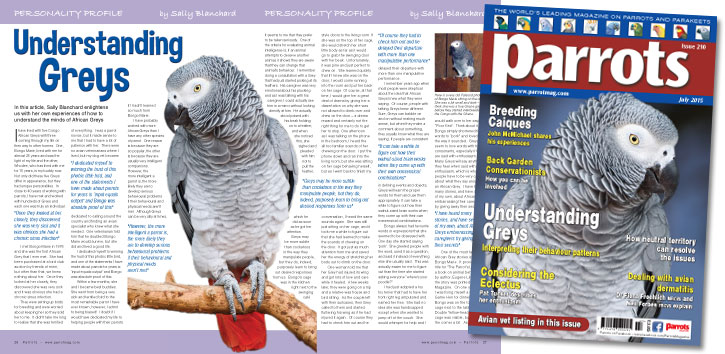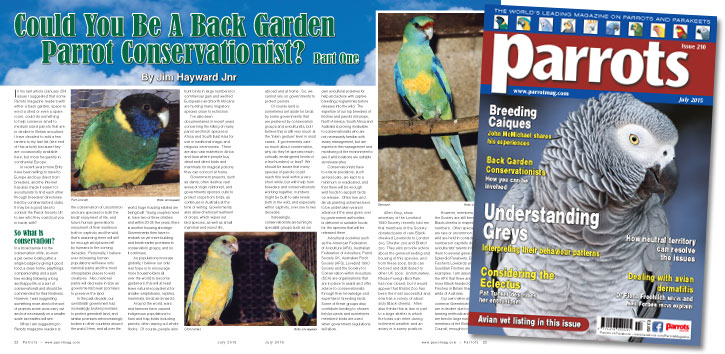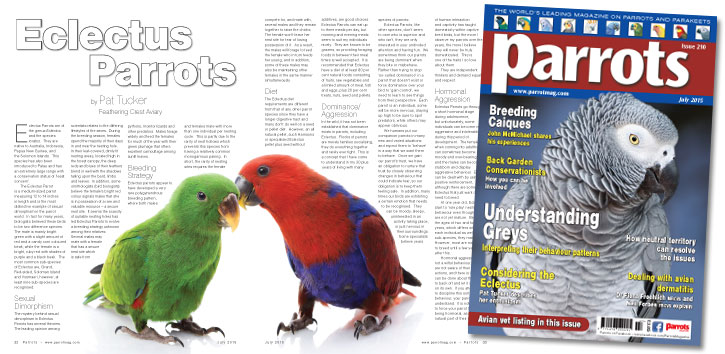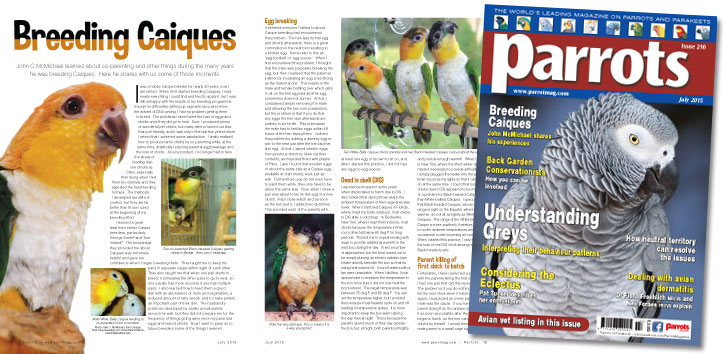
By Sally Blanchard
I have lived with five Congo African Greys with three coming through my life on their way to other homes. One, Bongo Marie, lived with me for almost 25 years and was the light of my life and the other, Whodee, who has lived with me for 15 years, is my buddy now. Not only did these five Greys differ in appearance, but they had unique personalities. In close to 40 years of working with parrots, I have met and worked with hundreds of Greys and each one was truly an individual.
I met Bongo Marie in 1976 and she was the first African Grey that I ever met. She had been purchased at a bird club auction by friends of mine, but other than that, we knew nothing about her. Once they looked at her closely, they discovered she was very sick and it was obvious she had a chronic sinus infection.
Buy Now!

By Jim Hayward Jnr
In my last article (January 204 issue) I suggested that some Parrots magazine readers with either a back garden, space to erect a shed or even a spare room, could do something to help conserve small to medium sized parrots that are in decline in British aviculture. I have decided to add a few rarities to my last list (see end of this article) because they are occasionally available here, but more frequently in continental Europe.
In recent years more Brits have been willing to travel to Europe and buy direct from breeders, and the Internet has also made it easier for aviculturists to find each other through breeders' directories held by continental bird clubs. It may be a good idea to contact the Parrot Society UK to see who they could put you in touch with?
Buy Now!

by �Pat Tucker, Feathering Crest Aviary
Eclectus Parrots are of the genus Eclectus and the species roratus. They are native to Australia, Indonesia, Papua New Guinea, and the Solomon Islands. This species has also been introduced to Palau and has an extremely large range with a conservation status of ‘least concern’.
The Eclectus Parrot is a medium-sized parrot measuring 12 to 14 inches in length and is the most distinctive example of sexual dimorphism in the parrot world. In fact for many years, biologists believed these birds to be two difference species. The male is mainly bright green with a slight amount of red and a candy corn coloured beak, while the female is a bright, ruby red with shades of purple and a black beak. The most common sub-species of Eclectus are, Grand, Red-sided, Soloman Island and Vosmaeri, however, at least nine sub-species are recognised.
Buy Now!

By John C McMichael
I was a hobby Caique breeder for nearly 30 years, now I am retired. When I first started breeding Caiques, I read nearly everything I could find and tried to apply it, but I was still unhappy with the results of my breeding programme. Except for difficulties setting up opposite sex pairs before the advent of DNA sexing, I had no problem getting them to breed. The problems I faced were the loss of eggs and chicks once they did go to nest. Sure, I produced plenty of wonderful pet chicks, but many died or turned out less than pet friendly, and it was only in the last few years before I retired that I achieved some satisfaction. I finally realised how to produce tame chicks by co-parenting while, at the same time, drastically reducing parental egg breakage and the loss of chicks. As a by product, I no longer had to face the stress of feeding day-one chicks as often, especially their dying when I fed them too clumsily and they aspirated the hand-feeding formula. The methods I developed are still not perfect, but they are far better than those I used at the beginning of my breeding effort.
Buy Now!




